Grethe from Mollas Bakeri in Rollag, Norway, is as authentic as they come. For her, staying true to the old traditions of cooking lefse is the secret to what makes her products stand out. For a truly authentic lefse experience, you’ll need a takke (griddle) on hand, heated by a wood-fire. As this may be difficult for most, a large electric griddle will suffice – although, you won’t quite be able to replicate the charred freckles and earthy, smokey taste. Nonetheless, with a little hard work and patience, you’ll earn yourself one tasty treat which you can show off to all your family & friends.
For more about Grethe & her bakery, see this post. You can also watch a short video to see how she cooks lefse on her traditional takke.
Mollas Lefse (Kling)
(makes around 30 large lefse)
Ingredients:
- 250 grams (2 cups) sifted rye flour
- 1 litre (4 cups) whole milk
- 450 grams (2 cups) salted margarine, melted
- 6 whole eggs
- about 1.8 kg (14 1/2 cups) all-purpose flour
- Spread: 400g (2 cups) sugar & 1.3kg (5 3/4 cups or 11 1/2 sticks) salted butter
Warm the milk slowly over medium heat. As soon as it begins to boil, take it off the heat and transfer to a heat-proof bowl. Add in the rye flour and stir until it has a porridge-like consistency. Add the melted margarine into the mixture.
Lightly whisk the eggs together and pour into the mixture. Begin to add 1.5kg (12 cups) of the all-purpose flour and mix. The dough should be sturdy enough that you can make rolls out of it – if more flour is needed, continue to add a little bit at a time. Divide the dough into individual rolls weighing 120g each.
Using a ribbed rolling pin (the ribs help push the dough further out, thinning it), roll each ball out as thinly as possible keeping their round shape. They should be around 50cm/20in in diameter.
Using a takke/griddle, cook the lefse evenly on each side, turning after only a couple of seconds if using a wood-fire takke or slightly longer on an electric griddle. The lefse should bubble up and brown. Once cooked, place plastic wrap below and above each one, layering them on top of each other, and cover with a large tea towel. This maintains the humidity.
When the lefse is finished cooking, begin to make the spread. In a food mixer, add the butter and sugar and mix well until incorporated.
When you are ready to make the kling, take one lefse at a time, and spread the butter/sugar mixture evenly over one half of the lefse. Then fold in half. Fold in half again. Using a knife, cut in half. Repeat with the rest of the lefse.
Grethe’s lefse recipe can also be found in the cookbook, Mat fra Numedal. Her story can be found here.
See her cooking the lefse on the wood-fired takke.
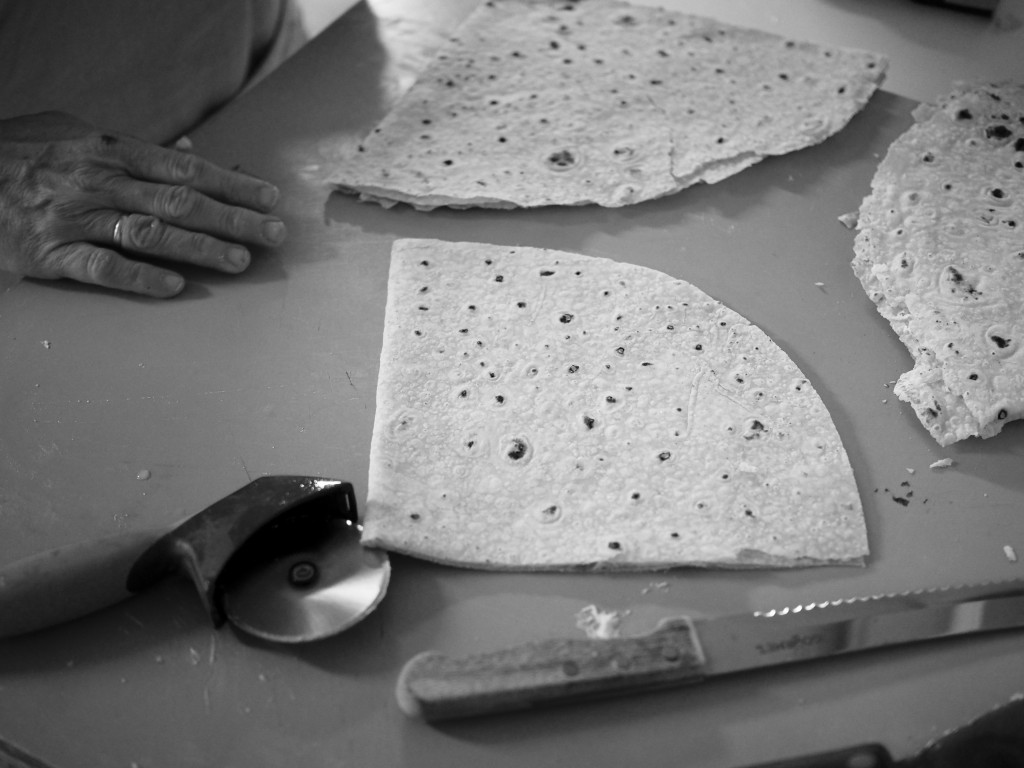

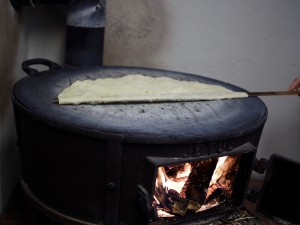
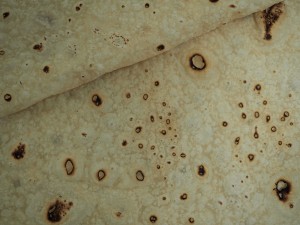
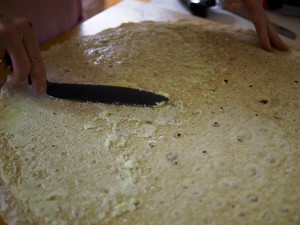
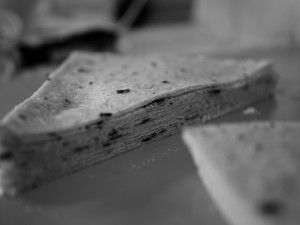
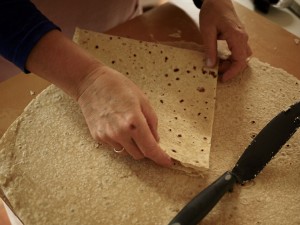
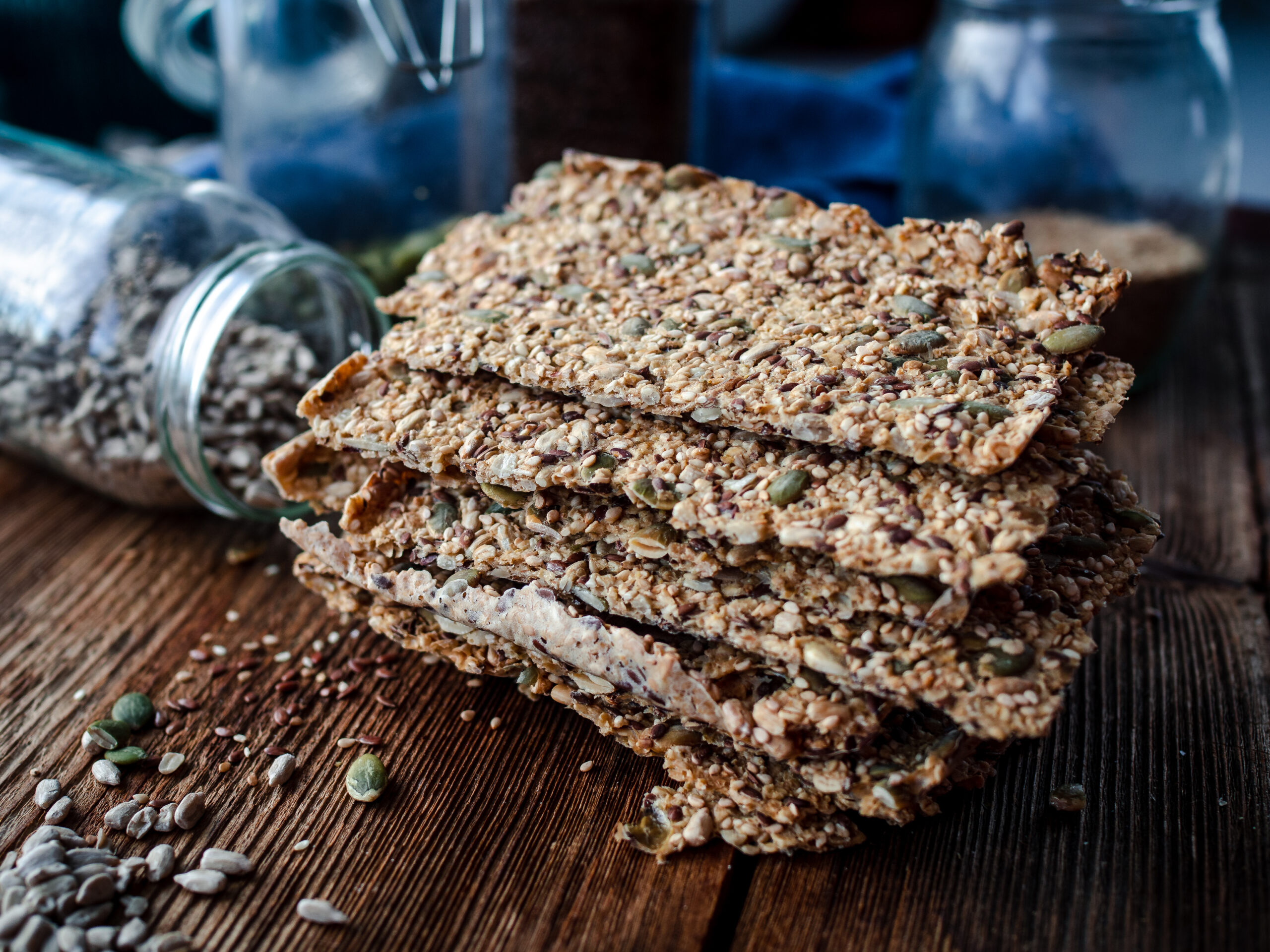
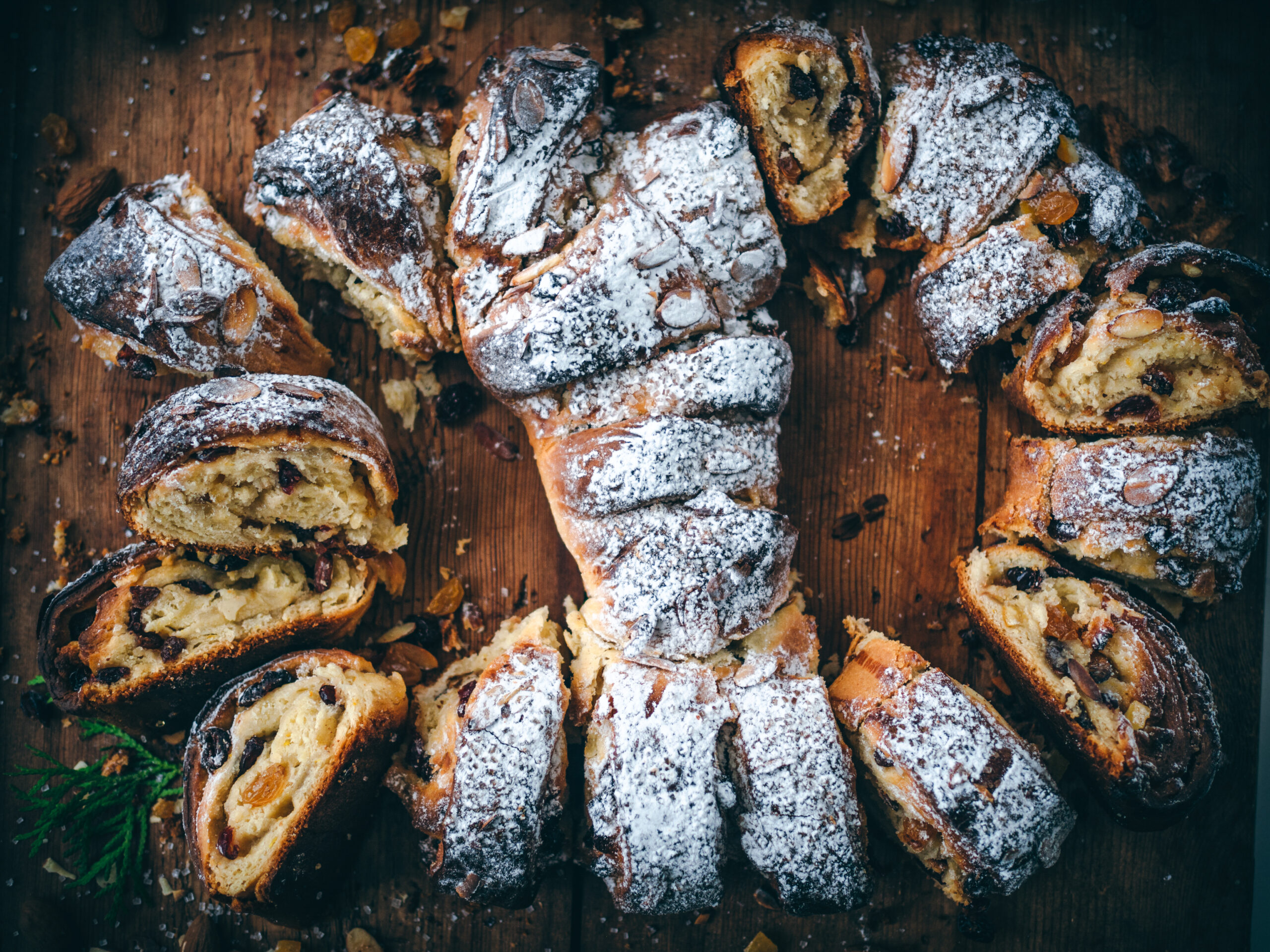
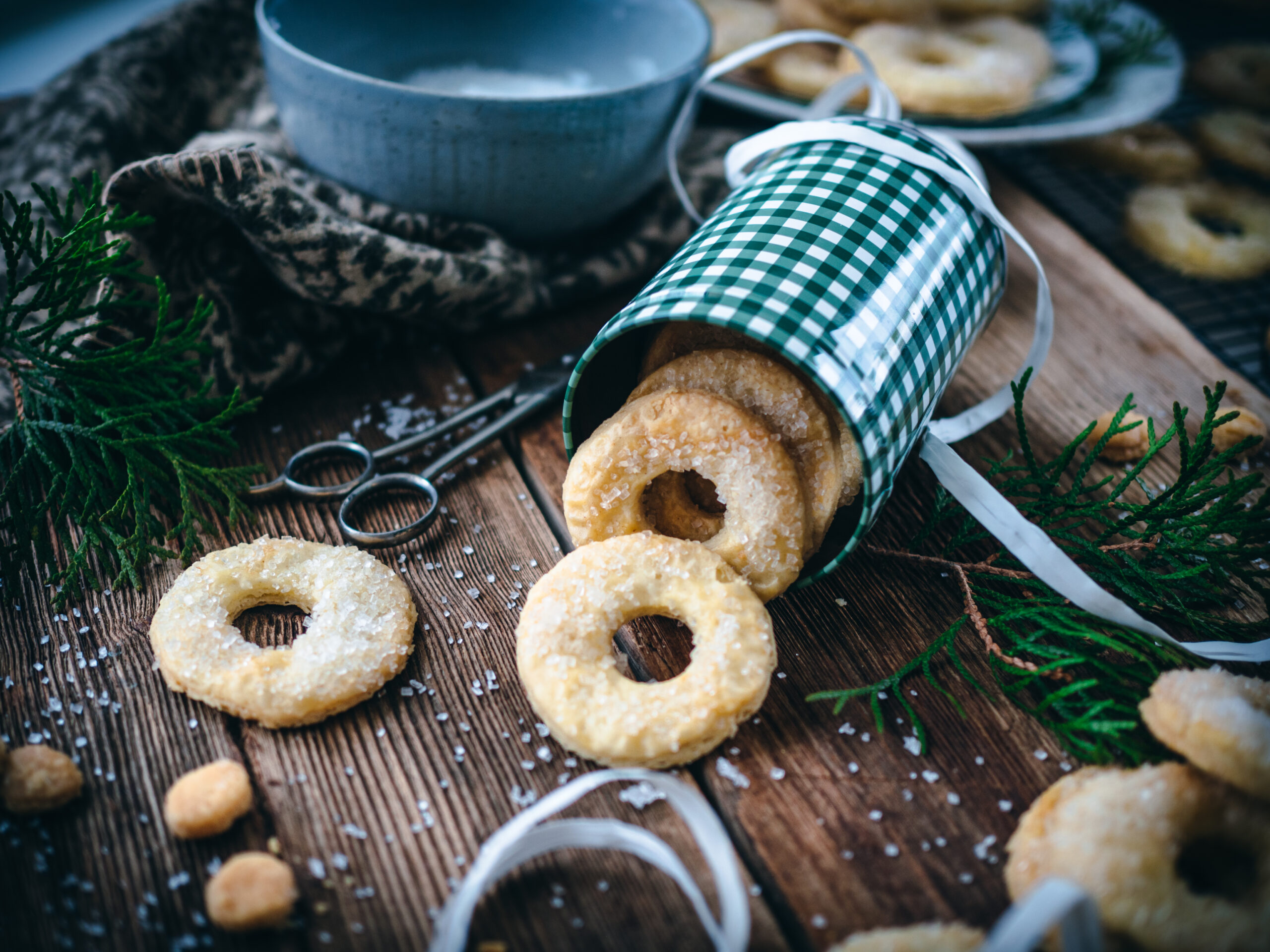
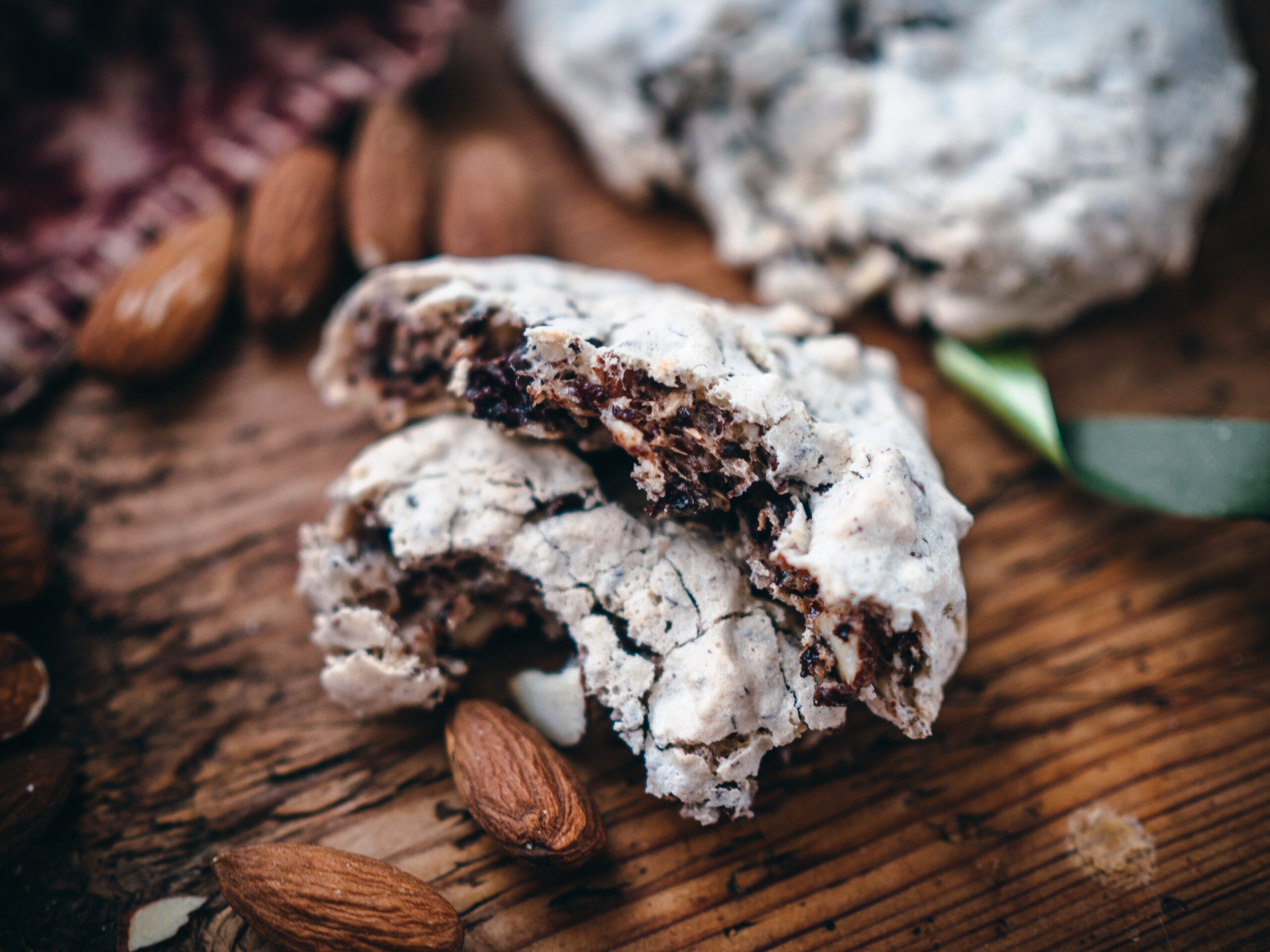

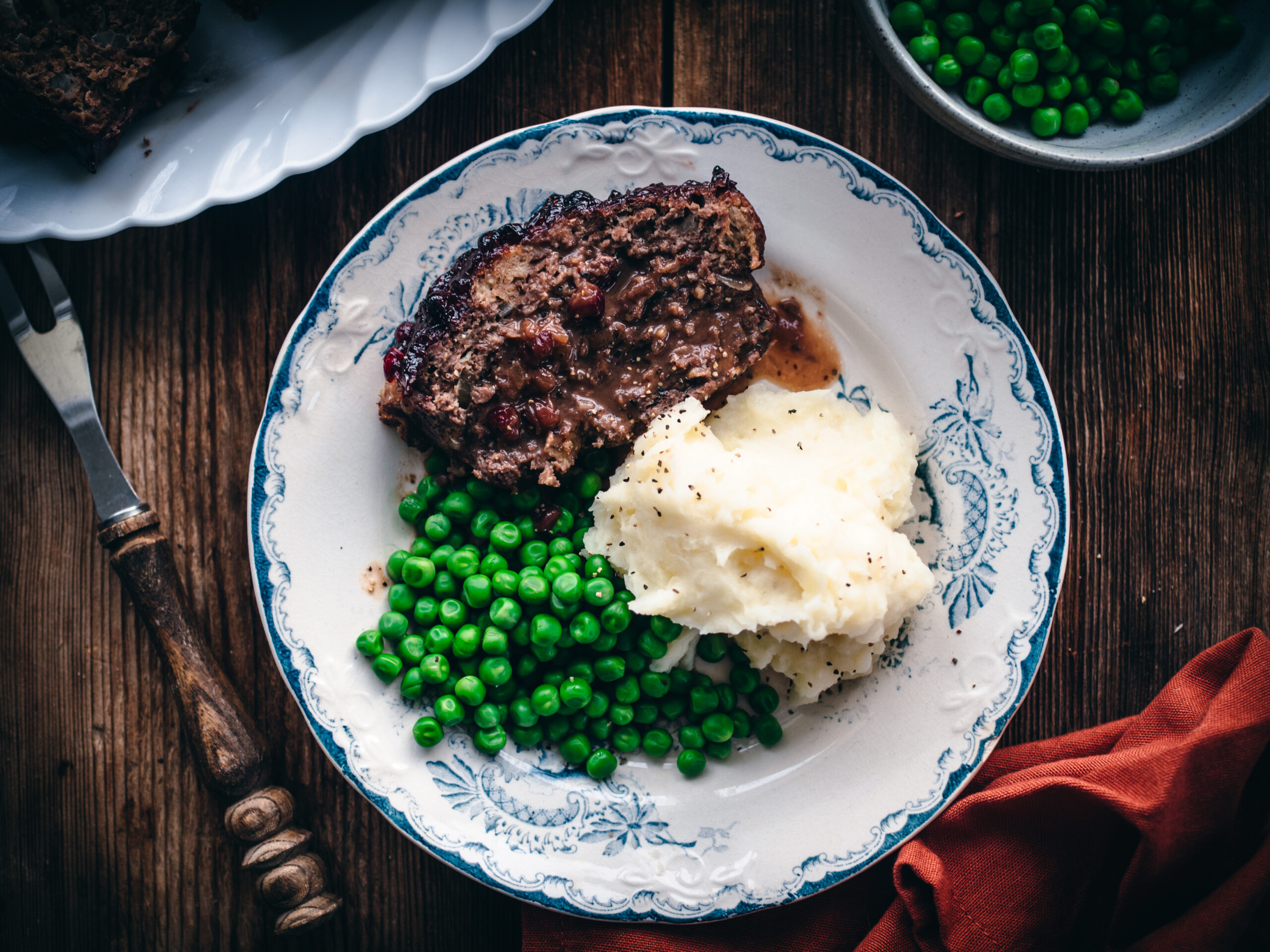
[…] Mollas Lefse […]
I loved reading Mollas Lefsa article. I just made a batch yesterday! It was time consuming, but I love making it.I may try your recipes if I can get all the ingredients. Thank you for sharing your story and the recipe.
Hi Rini! Thanks for your comment. I’m really happy to hear that you enjoyed the story about Mollas Bakeri…and that you are making lefse at home! Let me know if you get a chance to try any of the recipes, it is so fun to see how many different versions there are of the same dish!
I have a question. Every other recipe I have seen has potatoes. This one doesn’t. Does it have a different taste or texture?
Hi Tammy, thanks for your question. Potato lefse tends to be quite soft while there is a slight firmness and flakiness with these. The use of potato adds a bit of sweetness, and these have a taste more similar to that of a tortilla. These are also very thin, yet hearty, while some potato lefse recipes can be quite thick. Here, in the region of Buskerud, they tend to use kling (filled with butter and sugar) as a treat to serve alongside coffee. You can compare this recipe for kling with another similar one on my blog: https://northwildkitchen.com/uvdalsleiven-kling/. The latter is more soft and delicate and comes from the area of Uvdal, just up the mountain from Mollas Bakeri. Lefse is such an interesting product because every family in Norway has their own recipe and everyone tends to think their version is the best! I just like trying them all 🙂
Thank you for this. I’ve been confused with the omission of potatoes. What a wonderful explaination.
My Mom made lefse for every holiday my whole life. She always did it alone. We always tried to help but she was very fussy and took great pride in her lefse. She learned how to make it from my Dad’s mother who came to the U.S. as a child. It was very important to our father that we kept some of the Norwegian traditions going. My son and daughter ask Mom to teach them how to make lefse Pandora we finally got a recipe written down that we have all use every holiday every year. We lost our Mom at the age of 96 and I feel so grateful that we learned how to make it before she was gone. My daughter’s,granddaughters my sister-in-law, nieces, and even my son all gather together to continued the tradition and all take great pride in trying to improve our lefse making skills. Although we use a flat piece of iron on top of the stove it is a lot of work but we do enjoy doing it. Our recipe does use potatoes and cream so a bit different from yours, the technique is the same.
Hi Cindy. What a wonderful story! I’m happy to hear that you were able to get your mother’s recipe and that it is already being passed down throughout your family. This is just one of the simple activities in life which carry a connection throughout time. Thanks for sharing! 🙂
I was taught making leaflets with mashed potatos but this sounds much better . I have to try it. Wish I had a stove like that but will have to due with the electric one. Thanks for sharing.
Thanks Sharrell! I hope you do try the recipe, there are so many variations of lefse across Norway. In the area of Numedal, Norway (where Mollas Bakeri is located) it is normal to make lefse kling using ´extravagant´ ingredients such as eggs, cream and butter. Potatoes were viewed as a cheap ingredient so they chose not to use it in the lefse to keep them more special. I imagine this might be the case in other areas in Norway as well.
Hello our family makes lefse for the fall holidays. I love your wood fired grill. Did you make it or is it available for purchase somewhere?
Thanks
Hi Cindi, thanks for your comment! These types of stoves are quite old and I am not sure whether they make them anymore here in Norway. I imagine you can get one specially made, but most of the stoves still in use are found in older Norwegian farms.
Your recipe ingredients sound interesting. My grandmother taught me to use potatoes. Would like to try yours, can you help me with the measurements cups?
Hi Kathy! I’m going to update the recipe to include US measurements as well 🙂
Hello, this is a wonderful, that you so much for sharing. Do you have any ea where she got that stove/takke?
Oops, I see someone has already asked you this question. If you ever finds the answer about obtaining one please pass it along! I think we need one in our family 🙂
Thanks Cindy, I’m glad you enjoyed the story! The brand of the stove is Jøtul, if that helps at all. They are wonderful (we have one in our basement as well), but I’m not sure they are made anymore. It would be great if you could access one though 🙂
[…] Lefse from Mollas Bakeri […]
The recipe talks about rye flour….but I see none listed in the ingredients?? Thanks!
Hi, it’s the first ingredient listed – 250 grams (2 cups) sifted rye flour – 🙂